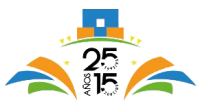Automated dual-exposure technique to extend the dynamic range of flat-panel detectors used in small-animal cone-beam micro-CT
| AUTHORS | |
| JOURNAL | IEEE Nuclear Science Symposium Conference Record, 2009 |
| ABSTRACT |
This work presents an approach to extend the dynamic range of X-ray flat-panel detectors for cone-beam micro-CT by using two different acquisitions of the same sample, taken at two different X-ray photon fluxes with the same X-ray beam peak energy and filtration. Photon flux for the first scan is chosen as the maximum possible value not saturating the detector in the low attenuation areas. The second exposure level is calculated from the data acquired in the first exposure, assuming that the detector response to the incoming radiation is linear. To combine both datasets, we model the response of a detector pixel, as well as the overall gain of the detector. Each pixel of each dataset is weighted according to its value. Pixels whose value lies within the high gain region of the detector receive the higher weights. The weighted joint probability density function (JPDF) is obtained by assuming that each dataset follows an independent Gaussian distribution. The final pixel value is calculated by means of a maximum-likelihood estimation performed on the JPDF. The algorithm has been tested imaging two different phantoms on a small-animal cone-beam CT. We have performed comparative experiments using the proposed dual-exposure technique and a regular single-exposure acquisition, following a fully automated procedure. In both cases the dose delivered to the sample was the same. Image quality was assessed from the image noise level and the presence of artifacts on the reconstructed slices, at different dose levels. The dual-exposure data show higher signal-to-noise ratio. Also, image artifacts are noticeably reduced in the dual-exposure dataset. Since the proposed technique enhance the quality of the data extending the dynamic range of the detector without increasing the delivered dose, it is particularly suitable to image samples which contain both low and high attenuating regions. Furthermore, the extension of the technique to use more than two exposure levels is straightforward.
|
| LINK | http://ieeexplore.ieee.org/document/5401605/ |



